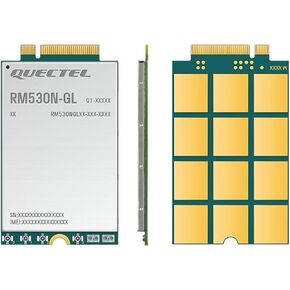- Shopping, made easy.
- /
- Get the app!
This board is an alternative to the Silicognition M4-Shim, and just like that board it is specifically made to fit on top of the PoE-FeatherWing, filling the empty space around the RJ45 and flyback transformer and allowing the creation of extremely compact Power over Ethernet systems.
Using the popular RP2040 microcontroller from the Raspberry Pi Foundation, you get dual ARM Cortex-M0+ cores @ 133 MHz, 264 kB on-chip SRAM, the powerful PIO peripheral and on this board 4 MB of QSPI flash!
The RP2040 comes with built-in UF2 bootloader for easy flashing, and the board has CircuitPython with Wiznet W5500 drivers pre-installed, plus a poe_featherwing.py module that sets the Ethernet connection up for you.
A special feature of this board is a custom chip to enable the familiar single-press to reset, double-press to enter bootloader button! So from a user experience point of view, it behaves exactly the same as the M4-Shim.
One option has a horizontal USB connector, the micro USB is in the same place as a normal Feather would have it: facing the opposite direction from the Ethernet jack when mounted on a PoE-FeatherWing.
The other option has a vertical USB connector, facing up from the board. It is intended to be used in systems that stack 3 boards: PoE-FeatherWing on the bottom, an application specific board in the middle (which can have its own connectors) and the RP2040-Shim on top, with the USB facing up. A 3-PCB stack would not work well with the standard USB direction: if the RP2040-Shim's USB faces the same way as connectors on the application specific board, they would likely interfere with each other. By facing the USB up, it continues to be easily accessible from the top, no matter what the application board in the middle looks like. The whole RP2040-Shim "user interface" (button, USB, LEDs) is also nicely clustered together.
Comes with a plastic spacer and two single row 20-pin headers with 6.7 mm pins on both sides.
 Silicognition wESP32 - ESP32 with Isolated Ethernet and 13 W IEEE 802.3at Power Over Ethernet
KWD 23
Silicognition wESP32 - ESP32 with Isolated Ethernet and 13 W IEEE 802.3at Power Over Ethernet
KWD 23
 Intel 5M240 CPLD Development Board - BeeProLogic
KWD 8.500
Intel 5M240 CPLD Development Board - BeeProLogic
KWD 8.500
 Development Board,oimex -poe, LAN poe, ethernet,TInternetPOE LAN8720A Chip Ethernet Adapter Expansion Board Programmable Hardware
KWD 19.500
Development Board,oimex -poe, LAN poe, ethernet,TInternetPOE LAN8720A Chip Ethernet Adapter Expansion Board Programmable Hardware
KWD 19.500
 waveshare Quectel RM530N-GL IoT 5G Global Band Module, 5G Sub-6G & MmWave Module, M.2 Form Factor with 3GPP 5G Release 16 Specification
KWD 112
waveshare Quectel RM530N-GL IoT 5G Global Band Module, 5G Sub-6G & MmWave Module, M.2 Form Factor with 3GPP 5G Release 16 Specification
KWD 112